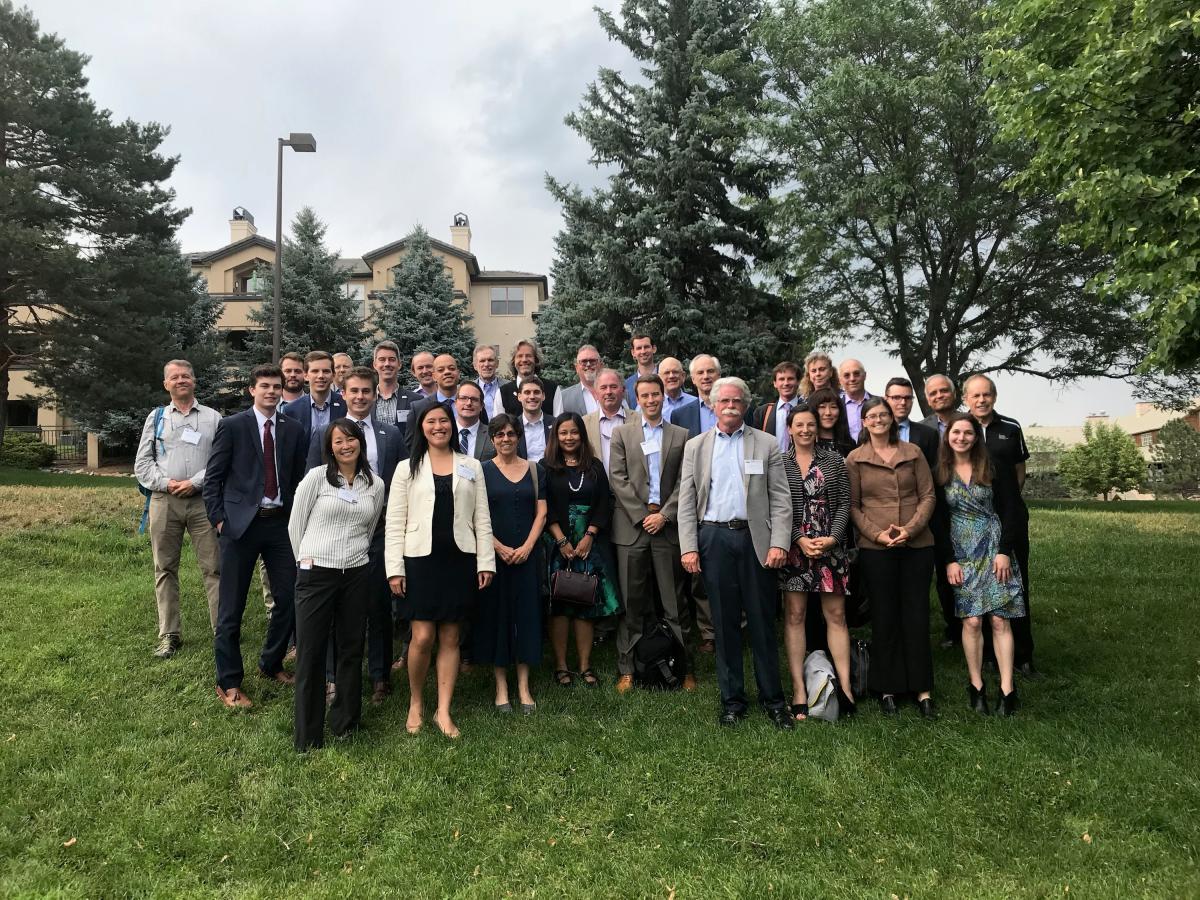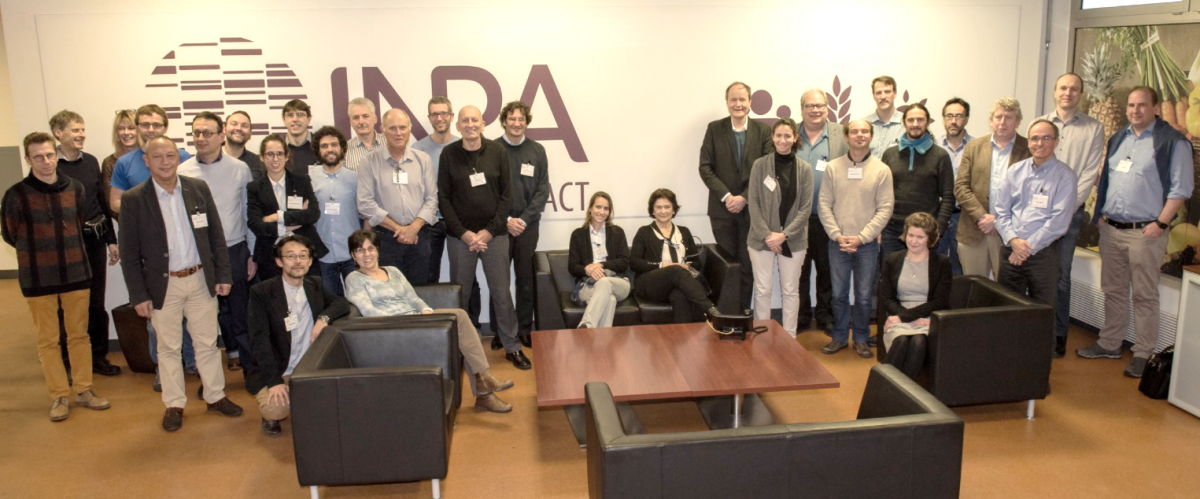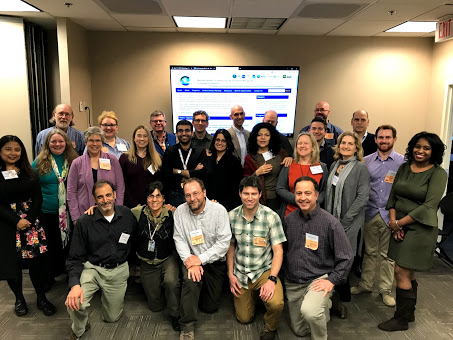- Home
- About
- Programs
- Carbon Science Planning
- Resources
- News & Opportunities
- Contact Us
SOCCR2 updates and public engagement activities
September 19, 2018
Following multiple formal and internal reviews conducted by the U.S. Government, the U.S. National Academy of Sciences, Engineering and Medicing (NASEM) and a public comment period, and consequent revisions and updates and revisions, the Second State of the Carbon Cycle Report (SOCCR2) is planned to be released by the U.S. Global Change Research Program (USGCRP) in late 2018. Here we highlight some recent SOCCR2 public engagement activities, nationally and internationally, with presentations, Town Hall meetings, and panel discussions:
At the national level (including international conferences):
- ESA-Portland August 2017 presentations and panel discussion
- American Society of Agronomy and Soil Science Society of America, Tampa, FL November 2017 —presentations and at section meetings
- American Geophysical Union December 2017 New Orleans—Poster session and discussion, Town Hall meeting
- ESA-New Orleans, August 2018, presentation and discussion
- Goldschmidt-August 2018 Boston, Presentation highlighting recent results from USDA and CCIWG funded research that informed SOCCR2, SOCCR2 process and announcement of expected release date
- USDA-DOE July 2018 joint workshop on Circular Carbon Economy-Golden Colorado (Presentation slides)

- ASA-Baltimore, SSSA San Diego, Last year—ASA-SSSA Phoenix
- National Academies and Public reviews of SOCCR2 and a workshop to address associated comments (April 2018)
At the international level:
- Negative Carbon Emissions Conference, Gothenberg, Sweden (Program)
- Integrated research group of the Global Research Alliance, Paris, France, January 2018—presentation and discussion of how SOCCR2 can feed into two flagships of the GRA: Inventories, and Soil Carbon Sequestration
- European Geophysical Union, April 2018 Vienna, Poster Presentation on SOCCR2 and carbon observations (Poster) (abstract)
- Mexican Carbon Program-Los Alamos, MX May 2018 Presentation on SOCCR2 process and public comment version especially on sections related to Mexico and the Mexican carbon assessment that is underway.
- Integrated Carbon Observation System (ICOS) – 3rd science conference, September 2018-presentation highlighting carbon observations progress and needs (Presentation slides) (abstract)
- Joint Global Research Alliance, Consultative Group for International Agricultural Research (CGIAR) and the Joint Programming initiative on Food Security Agriculture and Climate Change (FACCE-JPI) Science and Stakeholder Meeting, September 2018, Berlin—presentation at the science meeting and discussion at the stakeholder meeting. (Presentation slides) (abstract)

A note on prior SOCCR2 public engagement:
The development of SOCCR2 encompassed multiple public engagement opportunities, similar to prior USGCRP Sustained Assessment reports. One of the earliest, the February 2, 2016 Public Forum on the 2nd State of the Carbon Cycle Report at NOAA National Weather Service, College Park, Maryland, presented an opportunity for interested parties and stakeholders to provide individual input on proposed SOCCR-2 themes. Then, following a public Federal Register Notice (FRN 2016) for author nominations, technical input, and comments on the SOCCR2 Prospectus on February 12, 2015, the Carbon Cycle Interagency Working Group (CCIWG) selected lead authors for 19 chapters, and more than 100 additional Contributing Authors employing pre-determined criteria such as appropriate scientific expertise, professional background and diversity, assembling a writing team of scientists and technical experts representing U.S. agencies, national laboratories, universities, and the private sector. All 19 SOCCR2 Author Teams, and SOCCR2 Federal Steering Committee members and federal liaisons of the CCIWG met multiple times by phone, web, and in person, producing various iterations of their chapters after beginning work in May 2016. Author training webinars, which were available to Chapter Leads and other interested authors focused on report development process and requirements, metadata requirements and the Global Change Information System.
In the summer of 2017, the SOCCR2 Federal Steering Committee selected Review Editors (REs) from a slate of candidates nominated through a public open call. Following a public comment period via globalchange.gov and FRN (2017) and a formal review by the U.S. National Academy of Sciences, Engineering and Math (NASEM) (2018), the writing team further revised the draft.

On April 3–5, 2018, the 2.5-day SOCCR Chapter Leads’ workshop was organized at USDA NIFA in Washington, D.C., to finalize cross-chapter references, resolve remaining inconsistencies, and implement revisions in response to both public and NASEM reviews. Updates on the activities and progress of SOCCR2— starting May 2015, when its development was first approved by USGCRP —were posted on https://carboncyclescience.us/. The USGCRP, the North American Carbon Program (NACP), Ocean Carbon and Biogeochemistry Program (OCB), and the U.S. Carbon Cycle Science Program provided regular updates to scientific and professional communities via periodic newsletters and list-servs. The opportunity for the public to review the SOCCR2 Draft was promoted via social media (#SOCCR2, #NCA4) and newsletters of USGCRP, NACP, and OCB, as well as the NCAnet (ncanet.usgcrp.gov).
The SOCCR2 report dissemination includes two planned website versions. The SOCCR2 website 1.0 to be launched with the public release of the final report, is a static site with downloadable PDFs of each chapter. The SOCCR2 website 2.0, to be produced by NOAA in 2019, includes an interactive interface, with Global Change Information System and metadata documentation.
For additional details, follow updates on https://www.carboncyclescience.us/state-carbon-cycle-report-soccr, https://www.carboncyclescience.us/news and https://GlobalChange.gov.

